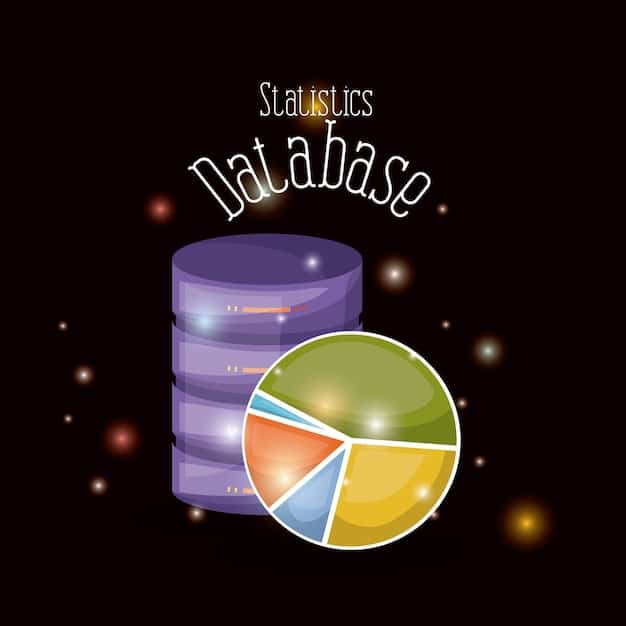Staking Ethereum in 2025: Profitability Analysis for US Investors

Determining whether staking Ethereum will remain profitable for US investors in 2025 requires careful consideration of factors such as network conditions, potential regulatory changes, technological advancements, and individual investment strategies within the evolving cryptocurrency landscape.
Will staking Ethereum still be a worthwhile investment for US investors in 2025? Let’s explore data-backed analysis.
Understanding Ethereum Staking
Ethereum staking is the process of participating in the Ethereum network’s consensus mechanism by locking up a certain amount of ETH (Ethereum’s native cryptocurrency) to help validate transactions and secure the network. In return for their efforts, stakers earn rewards, which can be a lucrative way to generate passive income with cryptocurrency. But, what does the future hold?
For US investors, understanding the nuances of Ethereum staking is crucial before diving in. Let’s break it down.
How Ethereum Staking Works
When you stake Ethereum, you’re essentially becoming a validator on the network. Your staked ETH helps to verify transactions and maintain the integrity of the blockchain. The network rewards validators with additional ETH, creating a continuous cycle of earning potential.
Key Components of Staking
Several components are critical to grasping how staking functions. These include:
- Validator Nodes: These are the computers running software that participate in the consensus mechanism.
- Consensus Mechanisms: Ethereum uses a Proof-of-Stake (PoS) system where validators are chosen based on the amount of ETH they stake.
- Staking Pools: These allow smaller ETH holders to participate by pooling their resources together.
It’s important to do your research and choose reputable platforms for your staking endeavors.
Ultimately, grasping Ethereum staking entails recognizing the interaction between validator nodes, the consensus mechanism, and the options available such as staking pools.

Current State of Ethereum Staking in the US
As of late 2024, Ethereum staking has become a popular investment strategy for cryptocurrency enthusiasts in the United States. The transition from Proof-of-Work (PoW) to Proof-of-Stake (PoS) has significantly altered the landscape, attracting a wave of investors seeking to earn passive income through staking.
Let’s delve into the current status of Ethereum staking in the US.
Regulatory Context in the US
The regulatory environment surrounding cryptocurrencies in the US remains somewhat unclear. The SEC (Securities and Exchange Commission) has been closely monitoring the crypto space, and staking activities may be subject to securities regulations. It’s crucial for US investors to stay informed about the latest regulatory developments.
Popular Staking Platforms
Several platforms cater to US investors interested in staking Ethereum:
- Coinbase: A widely used exchange offering staking services.
- Kraken: Another popular exchange with staking options.
- Lido: A decentralized staking solution allowing users to stake any amount of ETH.
Choosing the right platform depends on your risk tolerance, technical expertise, and the amount of ETH you wish to stake.
Tax Implications for US Investors
Staking rewards are generally treated as taxable income in the US. The IRS (Internal Revenue Service) has provided some guidance, but the rules can be complex. Consulting with a tax professional is advisable to ensure compliance.
In conclusion, Ethereum staking in the US is shaped by regulatory uncertainties, diverse staking platforms, and complex tax rules.
Factors Influencing Profitability in 2025
Predicting the profitability of staking Ethereum in 2025 requires analyzing several key factors. The cryptocurrency market is notoriously volatile, and various elements can influence the returns on staked ETH.
Let’s dive into the elements that might impact profitability in 2025.
Network Conditions and Staking Demand
The overall health and activity of the Ethereum network play a significant role. Increased network usage and higher transaction fees can lead to higher staking rewards. Conversely, lower activity can reduce profitability.
Ethereum Upgrades and Technological Advancements
Future upgrades to the Ethereum protocol, such as sharding and layer-2 scaling solutions, could impact staking rewards. These advancements might improve efficiency or alter the staking mechanism itself.
Competition Among Validators
As more validators join the network, the rewards are distributed among a larger pool, which can decrease individual profitability.
Ultimately the network health, Ethereum’s evolution, and validator competition will impact the profitability of staking in 2025.

Potential Risks and Challenges for US Investors
While staking Ethereum can be a profitable endeavor, it’s essential to acknowledge the potential risks and challenges, particularly for US investors. Being aware of these pitfalls can help you make informed decisions and mitigate potential losses.
Let’s have a look at the potential risks involved for US investors.
Regulatory Uncertainty
The evolving regulatory landscape in the US poses a significant risk. New regulations could impose restrictions on staking activities or increase compliance costs, thereby affecting profitability.
Slashing and Penalties
Validators can face slashing penalties if they violate network rules or fail to perform their duties correctly. Slashing involves the loss of a portion of staked ETH, which can substantially reduce returns.
Smart Contract Risks
Staking platforms rely on smart contracts, which are susceptible to bugs and vulnerabilities. A security breach could result in the loss of staked ETH.
Market Volatility
The value of ETH can fluctuate dramatically, impacting the overall profitability of staking. A sudden price drop can offset any rewards earned through staking.
In short, US investors must consider regulatory issues, slashing risks, smart agreement vulnerabilities, and market volatility.
Data-Driven Profitability Analysis for 2025
To assess the likely profitability of staking Ethereum in 2025, a data-driven analysis is crucial. This involves looking at various metrics, projections, and historical data to make informed predictions. Understanding the numbers can help US investors gauge the potential returns and risks.
Let’s analyze predicted profitability based on data.
Projected Staking Rewards
Based on current estimates, the annual staking reward rate for Ethereum is approximately 4-6%. However, this rate can change based on network conditions and the total amount of ETH staked. As more ETH is staked, the reward rate tends to decrease.
Cost of Staking
The cost of staking Ethereum includes factors such as:
- Hardware and Software Costs: Running a validator node requires investment in reliable hardware and software.
- Electricity Costs: Validator nodes consume electricity, which can be a significant expense.
- Platform Fees: Staking platforms may charge fees for their services.
Break-Even Analysis
A break-even analysis involves determining the minimum staking rewards needed to cover the costs of staking. Investors should calculate this to ensure that the potential rewards outweigh the expenses.
Ultimately, projecting profitability entails evaluating staking rewards, costs involved and a break-even point.
Strategies for Optimizing Staking Returns
For US investors aiming to maximize their profits when staking Ethereum in 2025, implementing strategic approaches is critical. Optimal strategies can enhance returns and mitigate risks, making the most of your investment.
Let’s discuss multiple strategies to maximize staking returns.
Choosing the Right Staking Platform
Selecting the optimal staking platform is vital. Consider factors such as:
- Reputation and Security: Opt for platforms with a strong track record of security and reliability.
- Fees and Reward Rates: Compare the fees charged and the staking reward rates offered by different platforms.
- Ease of Use: Choose a platform that is user-friendly and easy to navigate.
Diversifying Staking Investments
Diversifying your staking investments can help reduce risk. Consider staking with multiple platforms or exploring different staking pools.
Staying Informed and Adapting
The cryptocurrency market is constantly evolving, so staying informed about the latest developments is essential. Adapt your strategies as needed to respond to changes in the market and the regulatory environment.
In summary, maximizing income involves choosing the proper platform, diversifying investments, and staying informed.
| Key Point | Brief Description |
|---|---|
| 💰 Staking Rewards | Earnings from validating Ethereum transactions. |
| ⚖️ Regulatory Risks | Changes in US law affecting staking. |
| 🛡️ Security | Platform vulnerabilities/smart contract attacks. |
| 📊 Market Volatility | ETH price swings impacting profits. |
Frequently Asked Questions
▼
Staking Ethereum involves holding ETH in a wallet to support the Ethereum network’s operations. In return, stakers earn rewards, often expressed as an annual percentage yield (APY).
▼
In the US, staking rewards are generally taxed as ordinary income. You’ll need to report the fair market value of the rewards you receive on your tax return.
▼
Yes, risks such as slashing and smart contract vulnerabilities exist. Slashing occurs if you violate network rules, leading to a portion of your staked ETH being confiscated.
▼
If the price of ETH crashes, the value of your staked ETH will also decrease, potentially impacting your overall profitability, even if you’re still earning rewards.
▼
While staking itself doesn’t have strict geographical restrictions, the availability and regulatory compliance of staking platforms can vary by country, including the US.
Conclusion
Whether staking Ethereum will be profitable for US investors in 2025 hinges on a web of interrelated factors. Rewards from transaction validations, regulatory changes, competitive intensity, and upgrades have an impact. By thoroughly grasping staking mechanics, anticipating possible threats, and utilizing optimization strategies, American investors can navigate the Ethereum landscape with improved chances of success.





